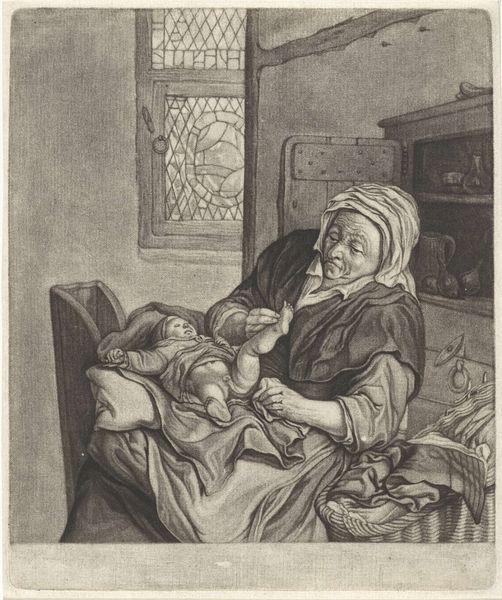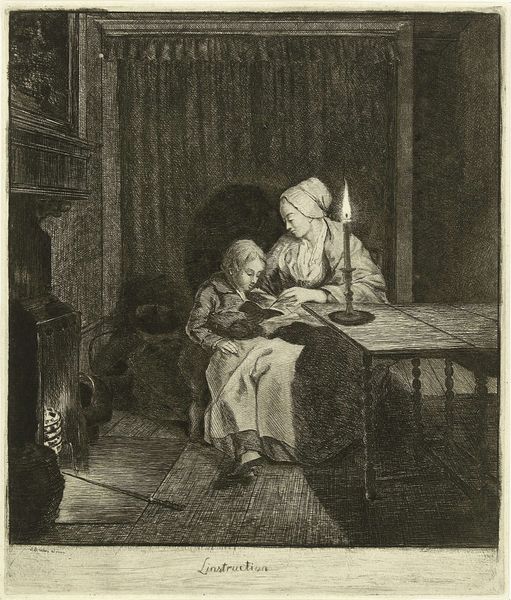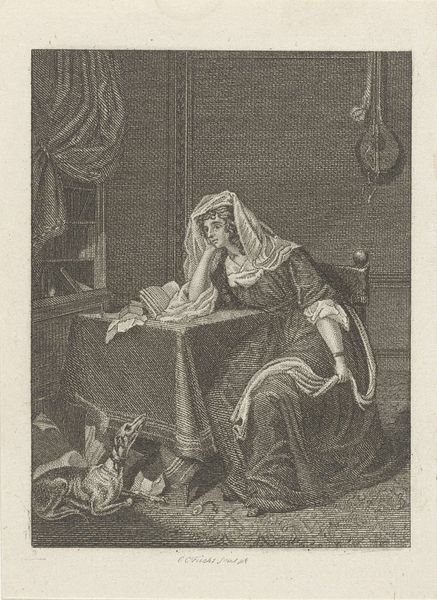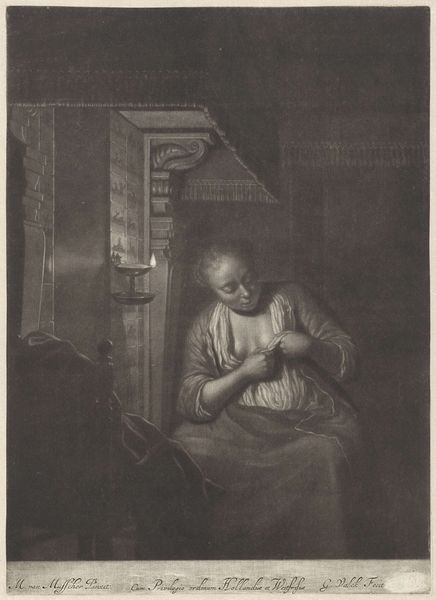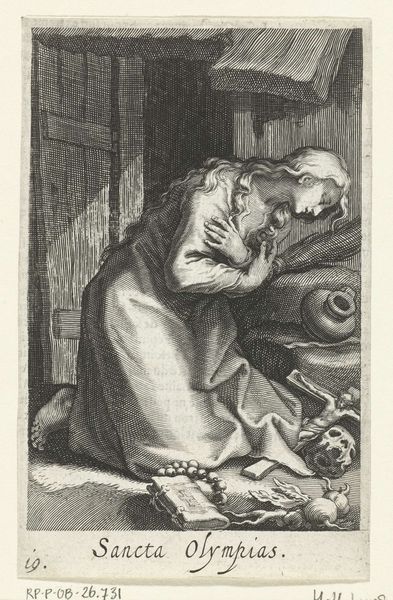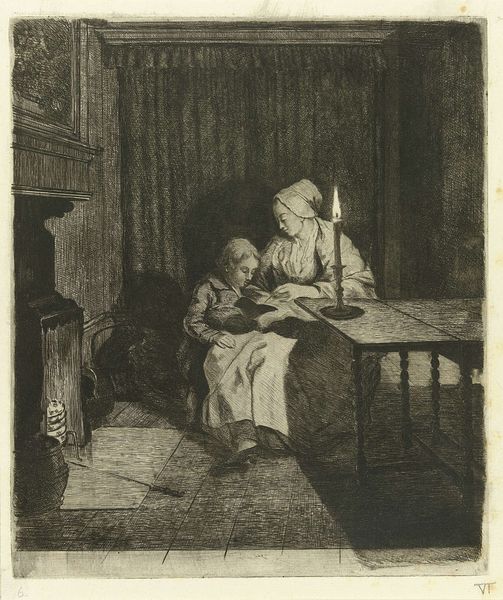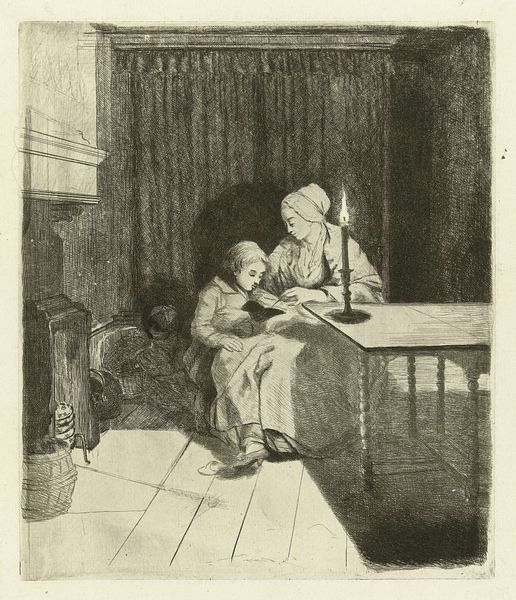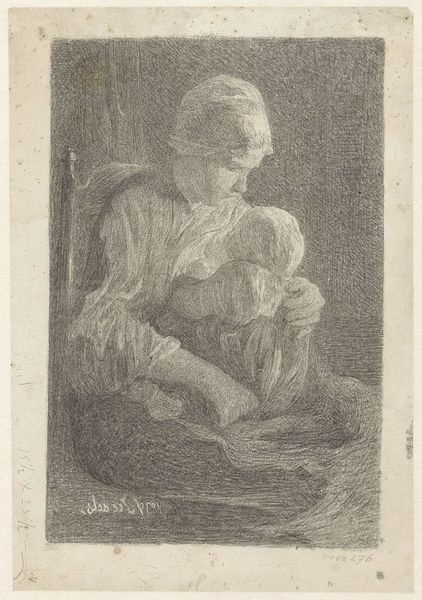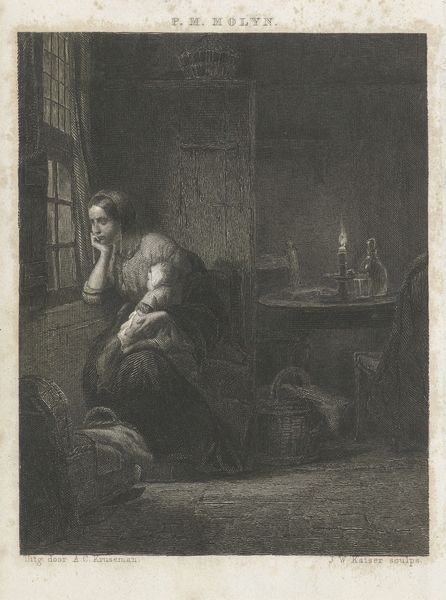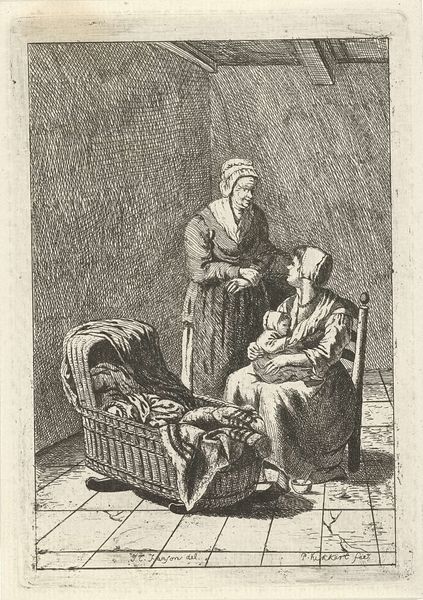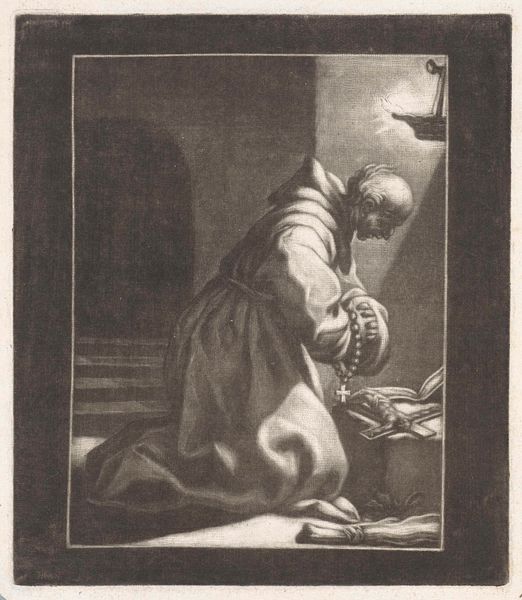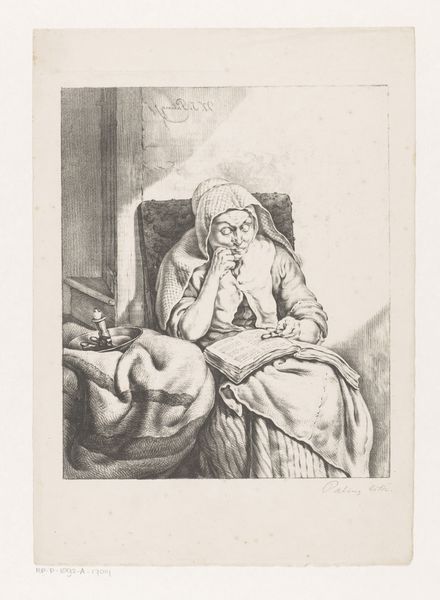
print, ink, engraving
#
portrait
#
baroque
#
dutch-golden-age
# print
#
ink
#
genre-painting
#
engraving
Dimensions: height 272 mm, width 210 mm
Copyright: Rijks Museum: Open Domain
Curator: This print, residing here at the Rijksmuseum, is titled "A Woman Nursing Her Child," and it is attributed to Hendrik Bary. Its creation falls sometime between 1657 and 1707, during the Dutch Golden Age. Editor: There's a striking domestic intimacy here. The muted tones and composition evoke a feeling of quiet perseverance amidst…well, what I perceive as the grim realities of that era. Curator: It's fascinating how Bary captures this very personal moment using engraving on paper. The texture achieved through ink suggests the weight of tradition and societal expectations bearing down on women. Think of how genre paintings, depicting scenes from everyday life, were gaining popularity, shaping and reflecting societal values about family and domesticity. Editor: Indeed. Look at the detailed cross-hatching: Bary’s skill highlights the rough texture of the fabrics—the coarse wool of the mother's skirt, and then the finer swaddling of the infant. I think this elevates the humble subject matter. These materials suggest not luxury or royalty, but the grit of daily life. Curator: Precisely. This print exemplifies the Golden Age preoccupation with representing everyday life and virtues. The act of breastfeeding becomes elevated. It embodies idealised motherhood, deeply resonating with the cultural ethos of the time. It presents an interesting insight into the domestic ideal versus perhaps, what was the domestic reality. Editor: It almost borders on the devotional, doesn't it? I appreciate the interplay between light and shadow. Despite the seemingly mundane subject, there’s a reverence conveyed through the treatment of light upon these textiles, which really grabs my attention. Curator: Agreed. It offers a glimpse into the negotiation between artistic expression and social commentary inherent in art of the period. Editor: Thinking about it, it speaks volumes about the labor and material circumstances defining everyday existence. Curator: Yes, the complexities within simplicity, making this piece worth more than just a passing glance. Editor: Absolutely. There's profound storytelling in those simple lines and subtle shadings, once you recognize the labour and materiality woven into the scene.
Comments
No comments
Be the first to comment and join the conversation on the ultimate creative platform.
